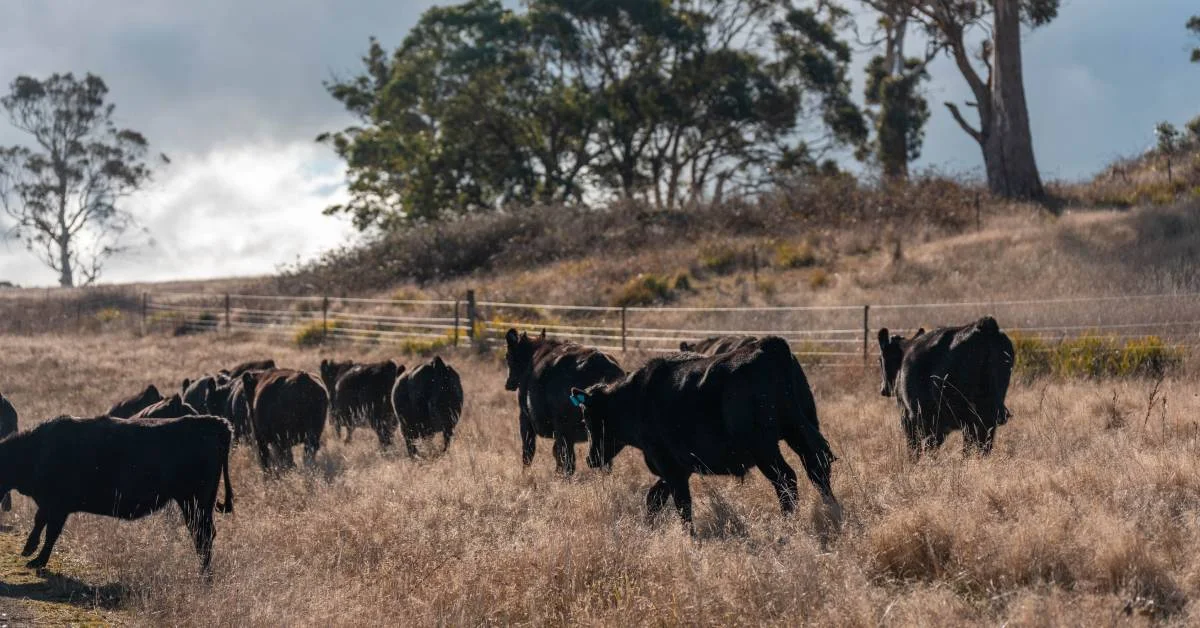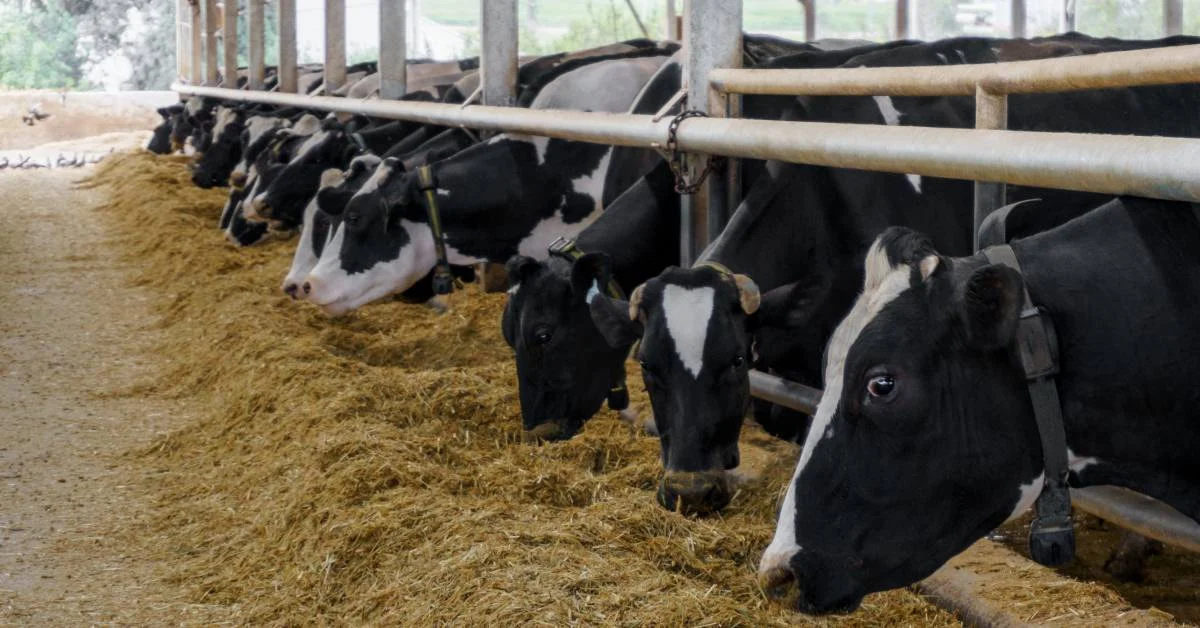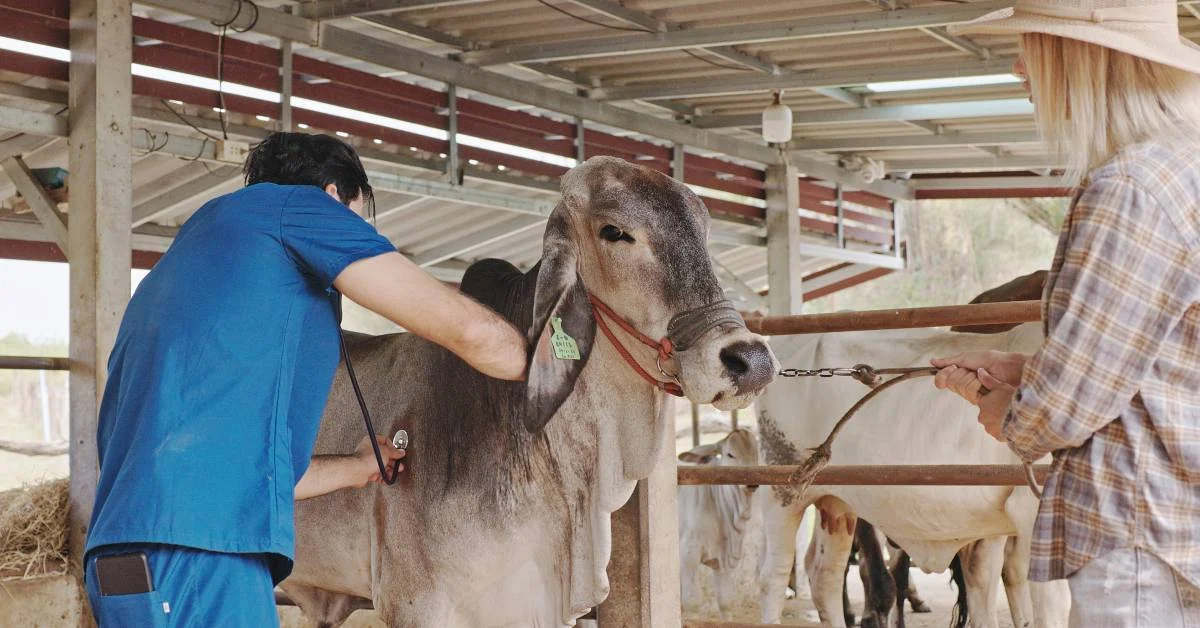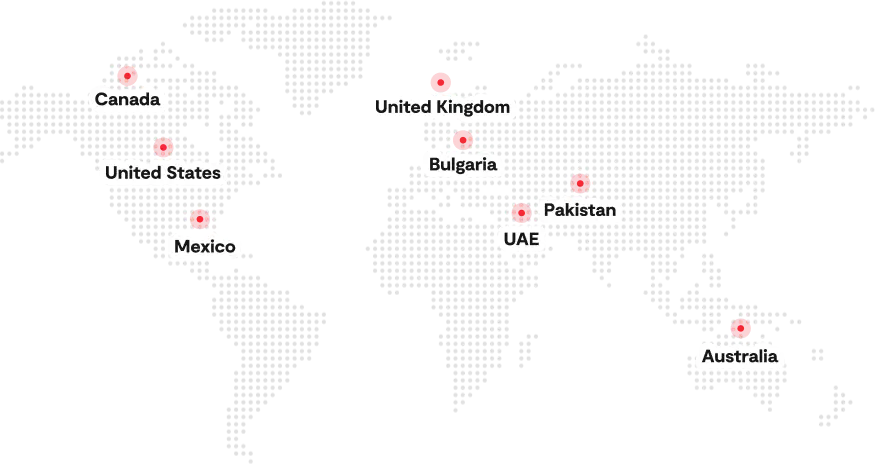In recent years, the agricultural landscape has undergone significant transformations, compelling mid-sized and large-scale farmers to reevaluate their operational strategies. One area that has garnered increasing attention is inventory planning. No longer a mere administrative task, effective inventory planning has become an essential step for enhancing farm productivity and sustainability.
Reinforcing this, a 2023 USDA Economic Research Service report found that from 2019 to 2021, U.S. farms reduced input usage by an average of 3.35% annually while increasing output. This shift underscores how smarter, leaner input management, including inventory planning, is becoming a critical lever for agricultural efficiency at scale.
Building on this momentum, technology is pivotal in modernizing how inventory is planned and managed on farms. Innovations like digital twins allow producers to simulate resource usage and plan more efficiently, while AI-driven systems provide real-time visibility into stock levels and storage conditions. These tools shift inventory planning from a reactive process to a predictive, data-informed strategy that minimizes waste and supports long-term operational resilience.
As we explore this guide further, we’ll explore actionable strategies and insights to help you optimize your farm’s inventory planning and ensure that you’re well-equipped to navigate the evolving agricultural landscape.
Inventory Planning in Agriculture
Inventory planning helps farms, whether livestock, crop-based, or mixed, manage stock levels, reduce waste, and make smarter, more profitable decisions. It’s the process of ensuring that vital inputs like feed, seed, fertilizer, veterinary supplies, and spare parts are available when needed and in the right quantity. For many farm operations, it’s the difference between smooth production and costly delays.
Like in any business, poor planning can mean surplus stock going stale or a critical shortage just before a harvest or health protocol. That’s why agricultural inventory management is more than a spreadsheet. It’s an integral part of operational success.
Why Inventory Planning Matters
Inventory planning isn’t just about keeping things stocked; it’s about maintaining operational control in a high-stakes, low-margin industry. Whether you’re running a large feedlot or managing thousands of acres in rotation, the consequences of poor planning show up in your bottom line. Here’s why it truly matters:
While much focus is placed on yields and sales prices, the hidden costs of poor inventory management, such as stockouts during peak seasons, expired veterinary drugs, or excessive capital tied up in unused inputs, rarely appear on P&L statements until it’s too late. For mid-sized and large-scale operations, inventory planning isn’t just a back-office process; it’s a strategic function that directly impacts operational uptime, regulatory compliance, and the farm’s ability to respond to market volatility. Effective inventory planning ensures:
Protecting Profit Margins
Accurate inventory management prevents costly emergency purchases and overstocking. By aligning procurement with actual usage patterns, farms can optimize cash flow and reduce waste.
Reducing Perishable Waste
In agriculture, expired inputs like vaccines or spoiled feed not only result in financial loss but also pose safety risks. Implementing inventory systems that monitor expiration dates and storage conditions minimizes such waste.
Enhancing Resource Planning
Visibility into inventory levels enables better forecasting and resource allocation. This ensures the timely availability of inputs, supporting uninterrupted operations and efficient production cycles.
Ensuring Regulatory Compliance
Maintaining accurate inventory records with the help of an efficient record keeping software is essential for meeting regulatory requirements, especially concerning the use of veterinary drugs and feed additives. Proper documentation supports compliance with the Veterinary Feed Directive (VFD) standards.
Improving Operational Agility
With precise inventory data, farms can swiftly respond to market changes, supply chain disruptions, or unexpected demand shifts, maintaining resilience in a volatile industry.
Challenges Farms Face with Inventory Planning

Despite the benefits, planning remains challenging, especially for larger or multi-site operations. Here’s what farms are up against:
Disorganized Data: Historical usage data is often buried in spreadsheets, purchase logs, or handwritten notes.
Lack of Automation: Manual stock counts and reactive ordering lead to inefficiencies and emergency spending.
Untrained Staff: Even when software exists, it’s only as effective as the people using it.
Perishable Stock Risks: Expired supplements, spoiled silage, and out-of-date meds hit both compliance and cost.
Tech Dependency: Automation without oversight can create blind spots. “The system reordered corn feed, but no one checked whether we had room to store it,” notes a poultry manager in Georgia.
Fragmented Systems: Different departments, nutrition, procurement, and compliance, using siloed systems leads to inventory blind spots.
Cross-Functional Gaps: Poor communication between crop and animal production teams results in duplicated orders or missing inputs.
Carrying Costs: With farm storage capacity limited, every excess pallet of unused seed or vaccine counts against working capital.
Step-by-Step Guide to Inventory Planning in Agriculture

Inventory issues on a farm rarely announce themselves. They show up quietly, through delays, rushed purchases, or resources sitting idle when they’re needed most. That’s why inventory planning is a core function of how a modern farm runs. It feeds directly into every operational layer, from procurement to production timing. More importantly, it shapes the accuracy and efficiency of your broader farm resource planning, ensuring that inputs, labor, and logistics are aligned instead of working at odds. In this section, we break down the process into clear, actionable steps to help you build a planning system that fits the way your farm actually operates.
1. Audit What You Already Have
Start with a complete physical and digital inventory of your current stock: seeds, fertilizers, feed, equipment parts, vaccines, packaging materials, even diesel drums if they impact your operations.
- Break it down by category (inputs, outputs, perishables, critical spares).
- Note the quantities, shelf life, and current storage conditions.
- Include what’s in transit or committed to upcoming usage.
Why it matters: Without a baseline, you’re guessing. This step sets the groundwork for precise reorder thresholds and avoids overbuying supplies you already have buried in a shed.
2. Map Your Usage Across Production Cycles
Farms don’t run on static consumption. Your inventory usage changes with every stage of the crop or livestock lifecycle.
- For livestock: Break down feed, meds, and supplements needed per growth phase.
- For crops: Note how much fertilizer, pesticide, or water is consumed per acre during each growth stage.
- Use real figures from previous seasons (if available) to establish usage benchmarks.
Insight: This level of detail enables smarter farm resource planning, ensuring you’re aligning purchases and storage with when things are actually needed, not just when they’re available.
3. Build a Forecast Using Actual Operational Data
This is where your planning turns predictive. Pull in past inventory usage logs, production yields, climate patterns, and market trends.
- Predict how much of each item you’ll need next season, not just based on “gut feel” but backed by data.
- Factor in price surges (e.g., for fertilizer or grain mixes) and shipping delays from past seasons.
- Keep scenarios flexible (e.g., dry vs. wet season plans).
Tip: If you’re managing crop inventory tracking, historical usage per acre becomes a powerful forecasting tool, one that avoids waste and under-application.
4. Set Minimum Stock Thresholds and Reorder Points
Now that you know your baseline and forecasted needs, it’s time to create automation triggers:
- Reorder point: The level at which a new order should be placed.
- Safety stock: A buffer to absorb unforeseen changes in demand or delivery delays.
- Adjust these based on item volatility, e.g., meds for calving season may require tighter windows than fencing material.
Strategy: Set dynamic alerts if you’re using inventory software, or create a reorder tracker sheet with visual cues.
5. Optimize Your Storage for Speed and Shelf Life
You’re not just storing stock, you’re storing it for use. Poor layout can increase spoilage, cross-contamination risk, and time to access.
- Group items based on frequency of use and shelf life.
- Use temperature- and moisture-controlled storage for sensitive inputs.
- For livestock meds and feed additives, follow expiry-date-first usage protocols.
6. Integrate a Digital Tracking System (Even a Simple One)
This doesn’t mean jumping to an expensive ERP overnight. Start small:
- Spreadsheet logs (with timestamps and batch IDs)
- GS1 QR code-based item tracking for bins or bags
- Mobile apps or custom dashboards
Benefit: The goal here is to move toward real-time visibility. It’s a critical enabler for agricultural supply chain optimization, allowing you to sync inventory with procurement, production, and even market sales.
7. Establish Regular Check-Ins and Mini-Audits
Inventory planning isn’t “set it and forget it.” You need to keep validating that what’s on paper matches what’s in the barn, shed, or silo. It helps you stay ahead, without panic orders or delays.
- Schedule monthly or biweekly spot checks for high-turnover items.
- Track shrinkage, damage, or use discrepancies and look for patterns.
- Revisit reorder levels quarterly, especially before planting or calving seasons.
8. Loop Inventory Into Team Roles and SOPs
Poor storage causes waste, mouldy feed, expired meds, or damaged seeds. Organize inventory by usage frequency and sensitivity. Use proper temperature, moisture, and light controls for items like fertilizers or veterinary supplies. Label clearly, rotate stock using FIFO techniques, and keep high-turnover items accessible.
- Make tracking part of daily chores (e.g., logging how many vaccine doses were used per pen).
- Set protocols for receiving and storing stock: label, document, and organize on arrival.
- Train staff on how to use the tracking tools, even if they’re basic.
Why Digital Tools Are Essential for 2025 Inventory Planning
In today’s agricultural landscape, the complexity of operations has outgrown traditional methods. Managing diverse inputs, fluctuating markets, and sustainability goals requires more than intuition, it demands precision and adaptability. Digital tools have become crucial in achieving efficient and responsive inventory planning.
Real-Time Visibility with Farm Inventory Systems
Modern farms juggle numerous variables daily, from feed schedules to pesticide usage. Understanding the importance of farm inventory management is key to streamlining these complexities. Farm inventory software provides real-time tracking of inputs and outputs, enabling farmers to monitor stock levels, predict shortages, and automate reordering processes. This level of control minimizes waste, reduces storage costs, and ensures that essential resources are available when needed, directly impacting the bottom line.
Enhancing Decision-Making
Precision agriculture tools, including GPS-guided equipment, drones, and IoT sensors, offer granular data on soil conditions, crop health, and environmental factors. By leveraging this information, farmers can make informed decisions about planting, irrigation, and harvesting, leading to optimized yields and resource use. These tools not only improve farm efficiency but also contribute to sustainable farming practices by reducing the overuse of water, fertilizers, and pesticides.
Simplifying Livestock Feed Management
Managing livestock nutrition is critical for animal health and farm profitability. Digital feed management systems allow for precise formulation and distribution of feed, designed for the specific needs of different animal groups. These systems monitor consumption patterns and adjust feeding schedules accordingly, ensuring optimal growth rates and reducing feed waste. The result is healthier livestock and more efficient use of feed resources.
Integrated Inventory Planning for Holistic Management
Effective inventory planning in agriculture requires the integration of various digital tools like ERP netsuite for agriculture with inventory systems to create a cohesive management ecosystem. By combining farm inventory software with precision agriculture tools and livestock feed management systems, farmers can synchronize operations across all aspects of their enterprise. This holistic approach enables proactive planning, reduces operational silos, and enhances the farm’s ability to respond to challenges swiftly.
Automating Reorders Based on Real Usage
Digital inventory tools monitor on-site usage patterns, down to the last bag of seed or batch of supplements, and trigger replenishment before shortages occur. This automation keeps operations moving without tying up capital in unnecessary stock.
Aligning Inventory Planning with Harvest Timelines
Modern Tools align your purchase and usage cycles with harvest schedules and animal feeding schedule, ensuring inputs like fertilizers, pesticides, and packaging are ready when needed, reducing last-minute supplier reliance and keeping production steady.
Digitizing Expiry Tracking for Perishables
From livestock feed to crop protection chemicals, digital tools monitor expiry dates in real time. This ensures inputs are used within safe windows, helping maintain compliance and minimizing waste due to overlooked spoilage.
Conclusion
Inventory is no longer just a logistical function; it’s an operational strategy. The ability to plan, forecast, and respond in real time is non-negotiable for mid-sized and large-scale farms navigating tight margins, shifting climates, and supply chain volatility.
Effective inventory planning aligns every part of the operation, from input procurement and feed management to seed utilization and equipment readiness. It bridges the gap between field-level activity and enterprise-level decisions. Done right, it reduces risk, increases responsiveness, and sets the foundation for long-term scalability.
As the sector moves toward more data-driven, precision-based systems, those who treat inventory planning as a dynamic, integrated discipline, not a static record-keeping task, will be best positioned to lead.
FAQs
What makes agricultural inventory planning different from other industries?
Agricultural inventory planning must account for perishability, seasonal variability, and unpredictable external factors like weather and disease. Unlike other sectors, farms deal with biological timelines and input/output cycles that require both real-time monitoring and adaptive forecasting to avoid operational disruption and waste.
How can inventory planning reduce farm input costs?
Strategic planning prevents over-purchasing and last-minute buying at inflated prices. By aligning procurement with actual usage data and crop/livestock cycles, farms can negotiate better supplier terms and avoid tying up capital in unused or expired stock, directly lowering input costs over time.
Is inventory planning relevant for mixed farming operations?
Absolutely. Mixed farms, those managing both crops and livestock, face dual inventory challenges. Proper planning ensures feed, seed, chemicals, and medications are stocked efficiently, minimizing waste and ensuring that timing-sensitive operations like sowing and vaccinations aren’t delayed due to inventory gaps.
What is the role of inventory audits in agriculture?
Inventory audits help identify mismatches between recorded and actual stock levels, common in farms using manual logs or multiple storage sites. Regular audits ensure compliance, reveal theft or spoilage issues, and build trust in data-driven decisions that impact harvest timing and supply chain commitments.
Can poor inventory planning impact traceability?
Yes. Inadequate planning can result in missing batch data, unlabeled products, or misaligned storage records, all of which weaken traceability. In regulated markets or recall scenarios, this gap can lead to compliance penalties or reputational damage, especially in livestock and perishable crop segments.







